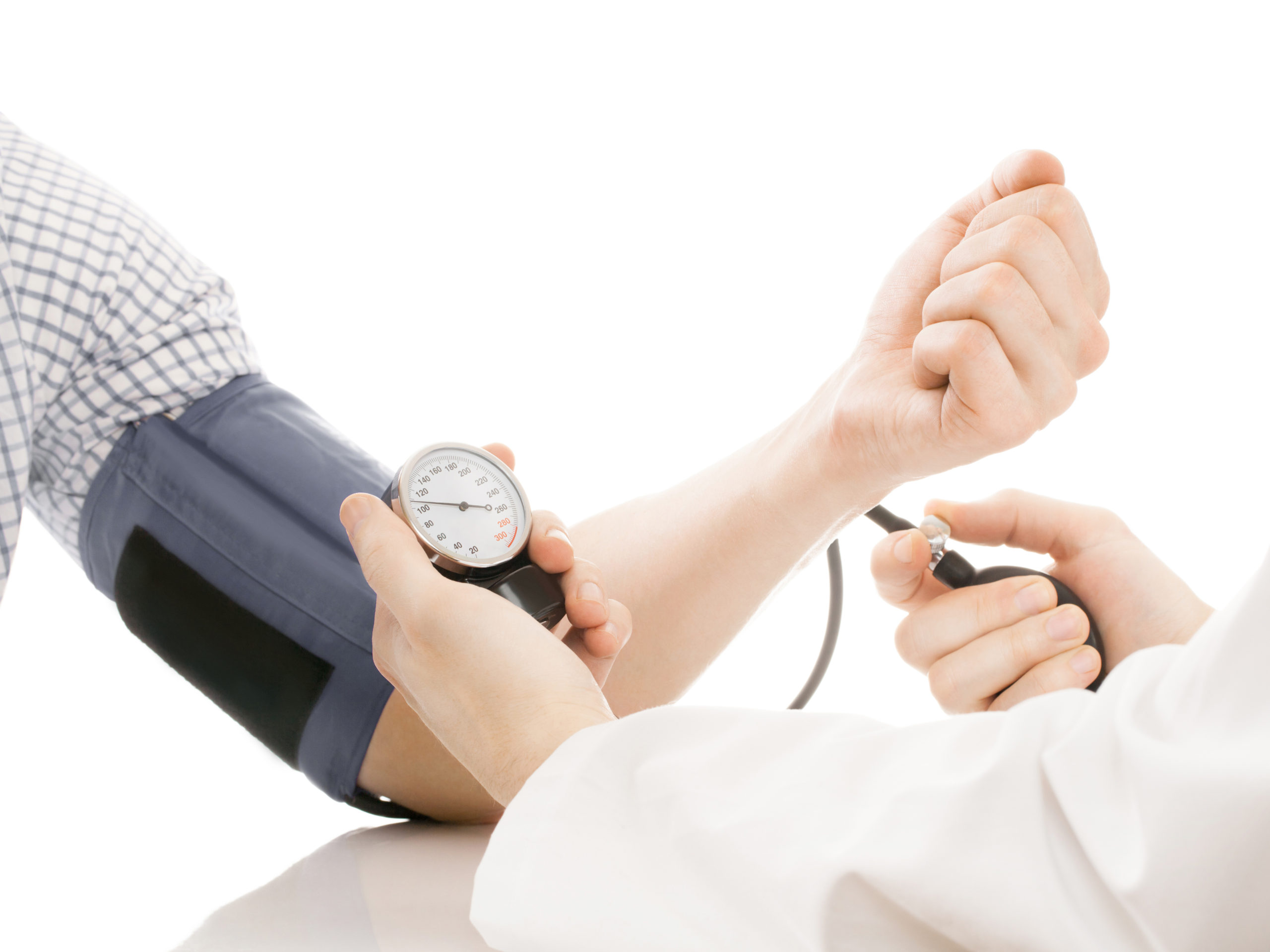Hepatitis Disease is an inflammation of the liver, most often caused by infection with a virus, but sometimes by alcoholism or intoxication by a drug or a chemical. Symptoms vary greatly from person to person and depend on the cause of hepatitis. Certain types of hepatitis squarely cause the destruction of a portion of the liver. The majority of hepatitis resolves spontaneously. Sometimes the disease persists for several months. When it lasts more than six months, it is considered chronic. When the liver is severely damaged, a transplant of that organ is the only solution.
Hepatitis Disease: Types
Hepatitis falls into two main categories:
- Viral hepatitis, caused by infection with a virus. In developed countries, hepatitis A, B, and C generate about 90% of cases of acute hepatitis. The hepatitis D, E, and G are also viral.
- Non-viral hepatitis, mainly caused by the ingestion of toxic to the liver, alcohol, toxic chemicals, etc. Non-viral hepatitis can also be the result of diseases affecting the liver as fatty liver and autoimmune hepatitis (chronic inflammatory hepatitis of obscure origin, which characterized by the production of autoantibodies).
Hepatitis A
HAV is present in the world but the incidence and prevalence levels linked to the level of economic development of regions. Schematically, more socioeconomic conditions are bad, the higher the rate of people who have encountered the virus is large (up to 100% in some areas of Africa) and the contamination occurs early in childhood. In France, in 1970, 50% of people aged at least 20 years had encountered the virus. They are only 10 to 20% today thanks to improved sanitation; where a significant risk of infection in countries with high prevalence trips.
How do you get hepatitis A?
- Hepatitis A is present in the stool of infected persons. Hepatitis A is thus transmitted by the fecal-oral route, either from person to person or through food or contaminated water. For example, it may contract the virus by failing to wash their hands after changing diapers of a baby or after using the toilet.
- One can also catch it by consuming contaminated water or food that has been in contact with contaminated water, such as shellfish and raw or undercooked shellfish, vegetables, salads, and unpeeled fruit.
- Contamination can also occur when an infected person handles food.
- The virus can also be transmitted during oral or anal sex.
- The virus is transmitted wherever sanitary conditions and personal hygiene are inadequate. The contagious period begins 15 days before the onset of symptoms and ends 15 days after their disappearance.
Incubation period: 15 to 45 days.
Signs and treatment: Most people with hepatitis A, whether mild or severe, recover naturally. Symptoms usually disappear within 4 to 6 weeks. There is a vaccine against HAV. There is also a combined vaccine against hepatitis A and hepatitis B.

Hepatitis B
Hepatitis B is a sexually transmitted disease most widespread on the planet and the most deadly. two billion people or one in three people in the world have already been in contact with the virus. Currently, 350 million people are chronic hepatitis B. Hepatitis B causes 2 million deaths per year: this is the second leading cause of cancer worldwide after tobacco. In France, 280,000 people are living with chronic hepatitis B. It is the cause of 1500 deaths per year. More than half of those infected with hepatitis B do not know they carry the virus.
How do you get hepatitis B?
The hepatitis B is highly contagious, ten times the hepatitis C, a hundred times more than the AIDS virus. It is also more resistant and is not destroyed by alcohol and ether. The virus in dried blood can remain stable up to seven days at a temperature of 25°C. HBV spread by contact with blood and other body fluids (semen, vaginal secretions, breast milk).
If one is not vaccinated, they could be contaminated by:
- Sexual intercourse (vaginal, anal, or receiving oral sex) with an infected person
- Sharing or handling of syringes and injection equipment or sniff (spoon, cotton, straw, etc.)
- Direct contact with the blood of an infected person
- Pregnancy and/or childbirth (HBV transmission from a mother infected to her newborn).
- Sharing razors, toothbrushes, scissors, nail clippers, tweezers, piercing jewelry, earrings, etc.
- Tattooing, acupuncture, and piercing done without the necessary hygiene (equipment, disposable or sterilized by autoclaving).
- It could contaminate food, water, common toilet use.
Incubation period: 50 to 100 days.
Signs and treatment: Jaundice (yellowing of the skin and eyes).Other general symptoms such as fatigue, loss of appetite, joint pain, pain in the stomach, and discomfort. There is a treatment that can stop the progression in over 50% of cases, plus an effective vaccine against HBV, which is a combined vaccine against hepatitis B and hepatitis A.

Hepatitis C
Hepatitis C is a relatively common disease. An estimated 170 million people, or 3% of the world population, are chronically infected with HCV worldwide and three to four million persons are newly infected each year. Considering that HCV is responsible for about 20% of cases of acute hepatitis and 70% of cases of chronic hepatitis.
Chronic hepatitis C is a major cause of cirrhosis and primary liver cancer (hepatocellular carcinoma). The silent evolution of the disease and the high rate of chronicity explain the existence of a large infected tank. In France, 220,000 people are living with chronic hepatitis C 1/3 still undetected. It is originally 2600 deaths per year. About a third of people infected with hepatitis C are unaware they have the virus.
How do you get hepatitis C?
The Hepatitis C spread primarily by direct contact with contaminated blood or blood products. It has identified several cases of infection from blood products before they tested for the presence of hepatitis C. However, current detection techniques have virtually eliminated the risk of transmission of hepatitis C users of the French system of blood collection and distribution.
At present, the main route of transmission of hepatitis C lies in the use of people who inject drugs, syringes, and other contaminated instruments (70% of 5000 new cases per year). The risk of infection is also present during the use of contaminated equipment used for tattooing, body piercing, acupuncture, and inhaling cocaine intranasally (snorting).
The risk of infection through sexual contact (traumatic practices) or during pregnancy remains low (less than 5% more if the mother has a double hepatitis C and HIV infection). Hepatitis C can also be spread by sharing with an infected person, personal items such as a razor or toothbrush. The disease also made its appearance among people who received blood transfusions before 1992.
Hepatitis C is not spread through casual contact such as clenching someone in his arms, kissing, deep kiss, or shaking hands or because of the proximity of a person who sneezes or coughs. The virus is not present either in food or water.

Hepatitis Disease
Incubation period: 15 to 45 days.
Signs and symptoms: 20% to 30% of infected people can make jaundice (yellow skin and eyes). Other symptoms of a general nature (discomfort, loss of appetite, stomach pain, dark urine, and fatigue) observed in 10% to 20% of those infected. 70% to 80% of those infected have no signs or symptoms of infection. 20% to 30% of people with acute hepatitis C without treatment.
There is a treatment that could cure more than 50% of cases (50-80% depending on the genotype of the virus).

Frequency of hepatitis
In Canada, hepatitis C is the most common viral hepatitis: each year affects about 45 100 people in 0001. As for hepatitis B, it reaches about 3 100 000 Canadians, and hepatitis A, 100 0001.42 1.5.
Viral hepatitis is much more common in non-industrialized countries. Hepatitis A is endemic in Africa, in some countries in South America and Asia. It is the same for hepatitis B. In fact, in most countries of sub-Saharan Africa and Asia, where 8% to 10% of the population are carriers of hepatitis B, it is the leading cause of adult mortality (liver cancer or cirrhosis). Almost 3% of the world population infected with hepatitis C. In Africa, the prevalence of infection is highest in the world: it exceeds 5% 4. Public health authorities are struggling to fight against viral hepatitis, which often goes unnoticed for years. Before a diagnosis established, the infection can not only have caused serious damage in the body but also have passed on to other people.

Possible complications
Undiagnosed or poorly treated in time hepatitis may lead to serious complications:
- Chronic hepatitis: it is the most common complication. Hepatitis called chronic if it has not healed after six months. In 75% of cases, it is the result of hepatitis B or hepatitis C. Chronic adequately treated usually heals within one to three years.
- Cirrhosis: Cirrhosis corresponds to the excessive production of “scarring” in the liver, formed as a result of repeated attacks (through toxins, viruses, etc.). These ‘fibrous barriers “eventually impede the free flow of blood in the body. 20% to 25% of chronic hepatitis develop cirrhosis if treatment is not fully or if it is not followed.
- Liver cancer: This is the ultimate complication of cirrhosis. It’s noted however that liver cancer may also result from localized cancer in another organ which extends liver metastases. Hepatitis B and C and toxic hepatitis caused by excessive alcohol consumption are most likely to progress to cancer.
- Fulminant hepatitis: Very rarely, fulminant hepatitis characterized by a major failure of the liver, which can no longer fulfill his duties. Massive destruction of liver tissue occurs and organ transplantation is necessary. It occurs mostly in people with hepatitis B or hepatitis toxic. For about one in four, it is fatal in short order.

The symptoms of hepatitis (A, B, C, toxic)
Hepatitis not betrayed by the various symptoms mentioned below. In many cases, the disease remains silent for years or simply manifests flu-like symptoms (fever, muscle aches, fatigue, headache). it may have caused some serious damage.
Typical symptoms of acute hepatitis
- Fever or sweating in the late afternoon
- Loss of appetite and weight loss
- Nausea
- Abdominal discomfort (especially the right)
- Jaundice (yellowed skin and cornea)
- Dark urine (the color of tea)
Symptoms of hepatitis fulminant
- Red spots on the skin, signs of hemorrhage, and nosebleeds
- Mental confusion, sometimes leading to coma
Note: In cirrhosis, there is a swelling of the abdomen and legs (caused by water retention), confusion, easy bleeding, and loss of muscle mass.

The prevention of hepatitis (A, B, C, toxic)
Hepatitis A
Screening recommended for individuals with cirrhosis, hepatitis B, chronic hepatitis C, or another chronic liver disease. Vaccination recommended for those who do not have antibodies against the virus of hepatitis A.
Hepatitis B
A screening test for hepatitis B offered to all pregnant women at their first prenatal visit. It’s made later in childbirth. The infection that’s fatal for pregnant women and for babies whose mothers infected.
People at high risk encouraged to take a screening test since the disease can remain silent for a few years.
The screening test is recommended for all people infected with HIV (HIV).
Hepatitis C
Highly-in-risk individuals are invited to take a test screening, the disease can remain silent for a few years.
The screening test recommended for all people with HIV.

Basic preventative measures to avoid contracting hepatitis
Hepatitis A
- Buy seafood from a reliable dealer and clean it carefully if you are to eat it raw.
- Do not eat raw seafood in restaurants where the hygiene is in doubt. Do not eat mussels or other marine products found beside the sea.
- When traveling in areas of the world where infection with hepatitis A is prevalent, consult a doctor two to three months before departure. Learn preventive measures in a travel clinic.
- Never drink tap water. Also, avoid using it to brush your teeth, and do not add ice to your drinks. Rather drink water from bottles decapsulated ahead. Failure to sterilize tap water by boiling five minutes. This not only eliminates the virus of hepatitis A but other microorganisms which might be present. Abstain from consuming soft drinks and beers produced locally.
- In a case of injury, never clean a wound with tap water. Use a disinfectant.
- During sex, use condoms consistently. It is better to think in bring with you to ensure their quality.

Vaccination
In Canada, there are four vaccines against hepatitis A (Havrix®, Vaqta®, Avaxim®, and Epaxal Berna®) and two vaccines against hepatitis A and B (Twinrix and Twinrix Junior). The immunity acquired lasts approximately four weeks after vaccination; it persists a year after the first dose (the vaccine efficacy duration lengthens if we receive booster doses). The National Advisory Committee on Immunization recommends vaccination for all people at high risk. These vaccines have an efficiency of over 95%.
Where a rapid immunization (within four weeks) and of the short duration required, immunoglobulins which administered. They were given within two weeks of exposure to the virus, and their effective rate is 80% to 90%. They are mostly used in the case of infants and people whose immune system weakened.

Vaccination: More Follows
Routine immunization of children (aged 9 and 10 years) against hepatitis B is now recommended, as well as that of individuals at risk who are not vaccinated (such as people working in the field of health). Two vaccines licensed in Canada: Recombivax HB® and Engerix-B®. They safely administered to pregnant women and nursing mothers. In Canada, there are two combination vaccines that protect against hepatitis A and B, given to people at risk for these two infections (Twinrix and Twinrix Junior).
Vaccination against hepatitis B in people with chronic liver disease (other than hepatitis B, such as cirrhosis or hepatitis C) reduces the risk that they will infect with the virus and their health deteriorating further. For these people the liver already achieved, the consequences of hepatitis B are more serious. The injection of hepatitis B immune globulin recommended to anyone who came in contact recently (for 7 days or less) with infected blood or body fluids. The immune globulin recommended in the case of newborns whose mother has the virus.
There is no vaccine against the virus of hepatitis C.

Hepatitis Disease: toxic hepatitis
- Follow the instructions on the package of drugs (including those over the counter, such as acetaminophen) and natural health products.
- Attention to interactions between drugs and alcohol. For example, it is inappropriate to drink alcohol and take acetaminophen (eg Tylenol® and Acet®). Check with your pharmacist.
- Store drugs and natural health products in a safe place, away from children.
- Adopt appropriate safety measures in the workplace.
- People who eat Chinese or Ayurvedic traditional medicines (India) herbal or considering doing must ensure the quality of herbal remedies. Some cases of toxic hepatitis caused by poor quality products reported 35-38: contamination (intentionally or not) by a toxic plant, a drug, or heavy metals occurred.
- Slimming products and those to treat impotence are most often implicated. Before making the purchase of a natural remedy manufactured in China or India, it is important to consult a traditional practitioner, naturopaths, or a trained herbalist. One can also regularly check the warnings on non-compliant products published by Health Canada.


